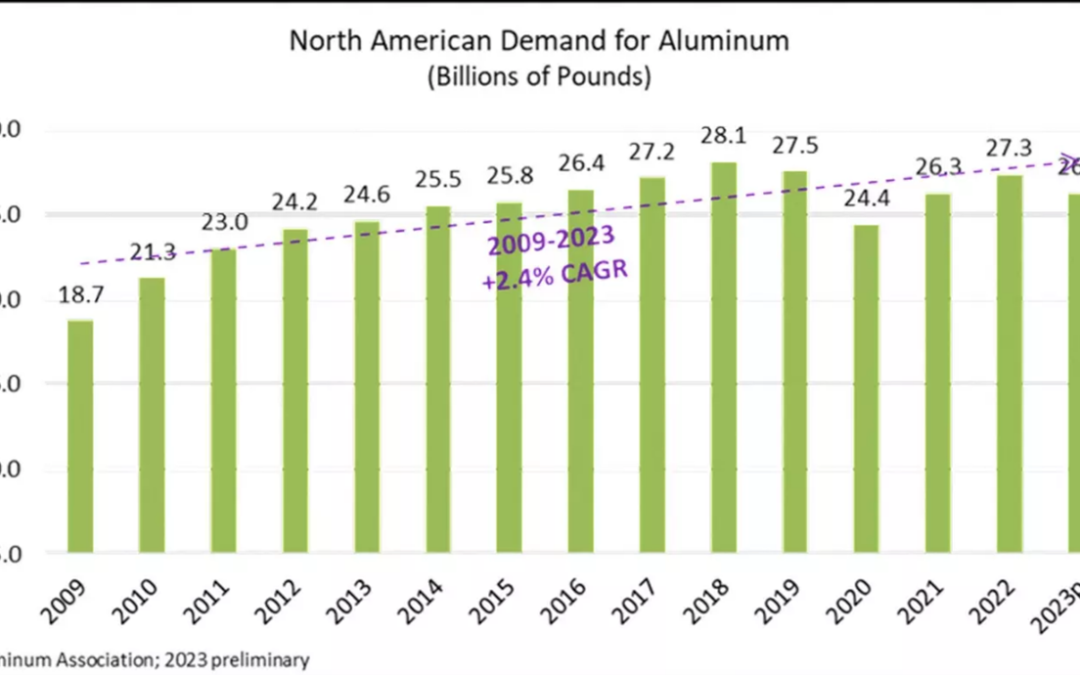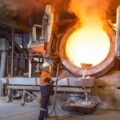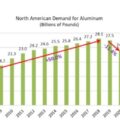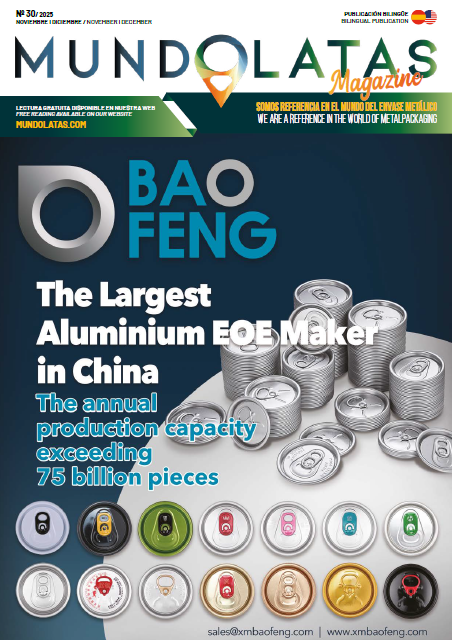U.S. aluminum consumption demand contracted by 3% although a small recovery in industry demand was seen in the last quarter of the year, and this ended with results similar to those of 2021. The decrease in demand was mainly due to a 25% reduction in imports, while shipments from domestic producers (including ingots and rolled products) remained stable.
According to Charles Johnson, president and CEO of The Aluminion Association (AA), although demand in North America declined somewhat in 2023 after a strong performance in 2022, recent data show signs of an early recovery. Johnson also mentions that with significant investment in U.S. aluminum manufacturing, steady shipments within the country and growth possibilities in key markets, the outlook for U.S. aluminum use remains positive.
The amount of aluminum ordered in the United States and Canada (including shipments from local producers and imports) reached 26.271 billion pounds in 2023, lower than the previous year’s total of 27.337 billion pounds.
During the last 12 years, domestic aluminum production has increased by approximately 2.4% each year.
The Net New Orders for Aluminum Rolled Products index, which has a base of 100 and is measured by the association, reached its highest point since June 2022 in January 2024 reaching a level of 114.5.
According to reports, the demand for electric cables and wires has increased by 12.1% annually due to the stability of the electric infrastructure market. In 2023, there was a 9.2% reduction in demand for semi-finished rolled products compared to the previous year.
Aluminum bar and sheet purchases in the North American region (including the United States and Canada) have decreased by 26.3% through the end of 2023.
Sales of rolled and ingot aluminum products from the United States and Canada (excluding trade between the two countries) experienced a 25.6% increase in 2023.
In the last eight years, the companies that make up the Aluminum Association have reported an investment of more than US$10 billion for their manufacturing operations in the country. Of this amount, more than half has been announced since 2021, as a result of increased demand for sustainable packaging, safe and efficient vehicles, eco-friendly buildings and essential infrastructure projects. According to Ken Stanford.














